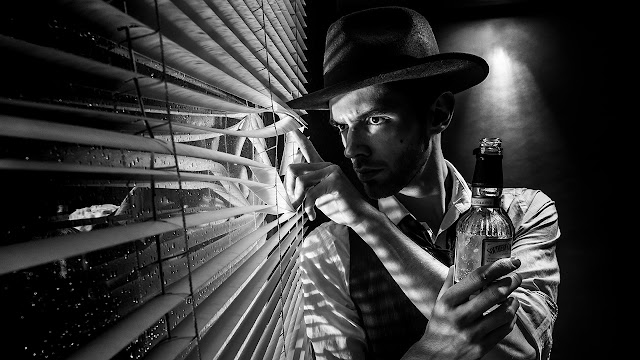Film noir research
Film noir:
-A style or genre of cinematographic film marked by a mood of pessimism, fatalism, and menace. The term was originally applied (by a group of French critics) to American thriller or detective films made in the period 1944–54 and to the work of directors such as Orson Welles, Fritz Lang, and Billy Wilder.
All film-noirs are unique in themselves and are mainly set in a low-key black and white theme. Some characteristics that may help in identifying a noir (it is not necessary for a film to have all of the characteristics to be considered film noir):
-A style or genre of cinematographic film marked by a mood of pessimism, fatalism, and menace. The term was originally applied (by a group of French critics) to American thriller or detective films made in the period 1944–54 and to the work of directors such as Orson Welles, Fritz Lang, and Billy Wilder.
All film-noirs are unique in themselves and are mainly set in a low-key black and white theme. Some characteristics that may help in identifying a noir (it is not necessary for a film to have all of the characteristics to be considered film noir):
- Urban environment
- Rain-soaked streets
- Seedy taverns, diners, and run-down buildings
- Claustrophobic interiors
- Flickering street lamps
- Neon signs
- Scenes appear dark, as if lit for night, with many dark shadows
- Oblique and vertical lines, especially in regards to lighting
- Shadows
- Films done in black and white
- Narration, especially flash-back narration
- Criminal underworld
- Hopelessness
- Corruption
- The "heroes" tend to be morally ambiguous, alienated from society, and have a fatalistic outlook.
- Characters torn by psychological conflict
- The femme fatale
Examples of some film noir films include: The Maltese Falcon (1941), Double Indemnity (1944), Laura (1944), and Murder, My Sweet (1944)- trailer shown below.
Neo-noir
-A modernised version of film noir
They are unconventional in nature. They have all the signs of film-noir with new ideologies and themes and they are not black and white. Some examples of neo-noir films include: Seven(1995), Fight Club(1999) and Mulholland Drive(2001)

Comments
Post a Comment